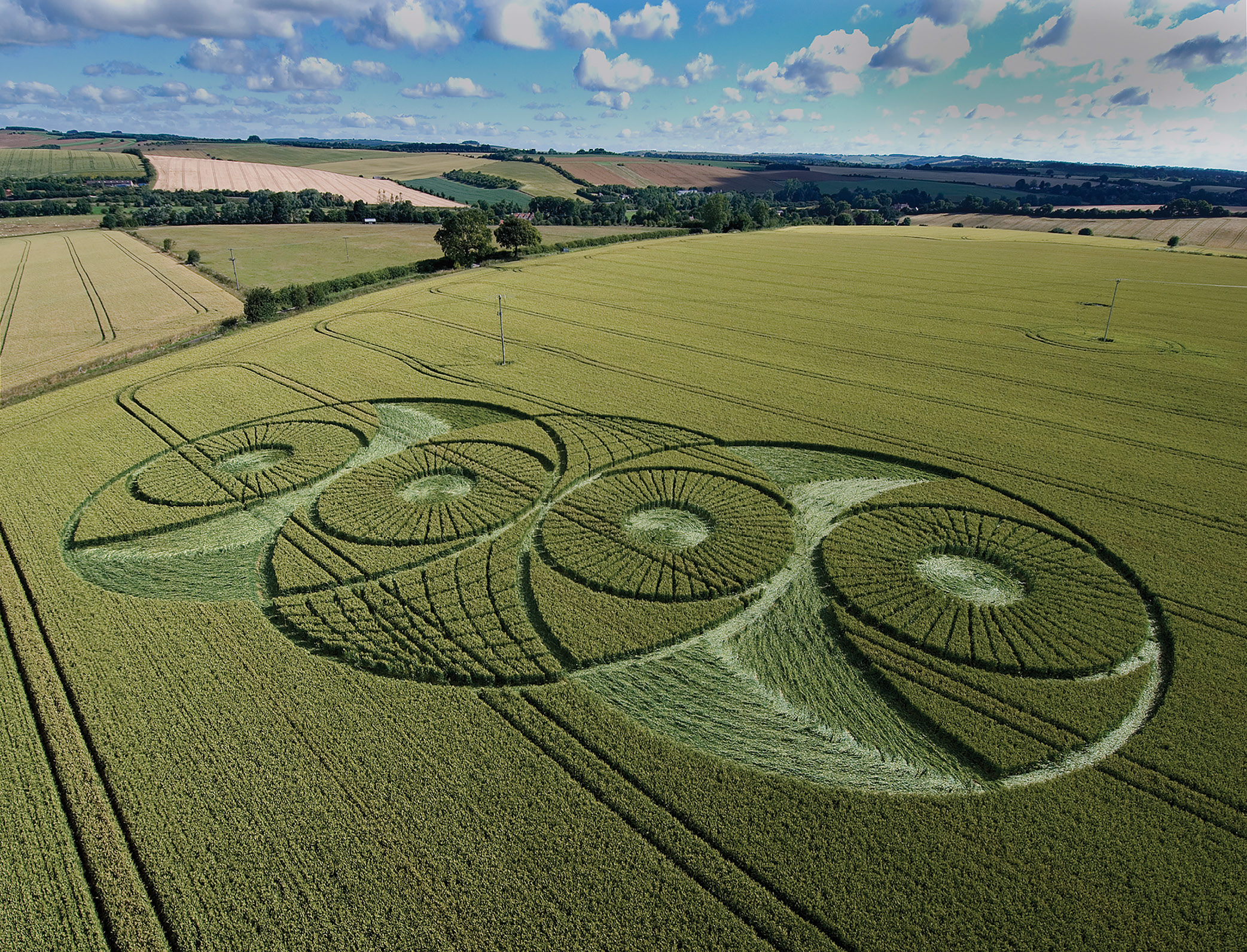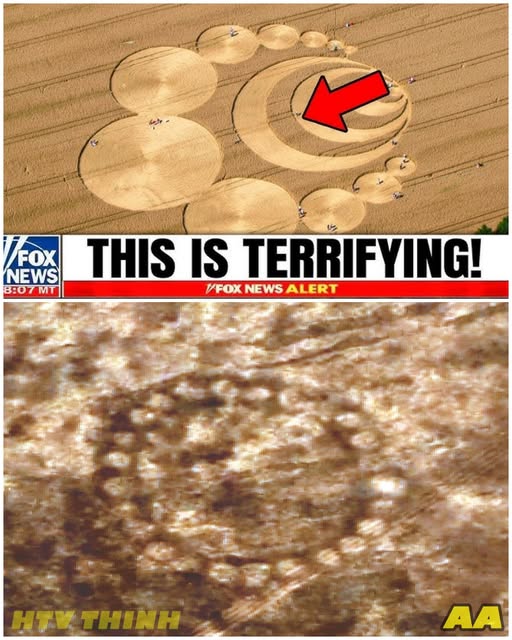 Scientists Unveil the Shocking Truth Behind Crop Circles: A Discovery That Will Leave You Questioning Everything You Thought You Knew!
Scientists Unveil the Shocking Truth Behind Crop Circles: A Discovery That Will Leave You Questioning Everything You Thought You Knew!

For decades, crop circles have been a source of intrigue and debate, capturing the attention of farmers, scientists, and conspiracy theorists alike.
These large geometric patterns carved into fields of wheat, barley, and corn often appear overnight, leaving behind a trail of questions and speculation.
At first glance, they may seem like harmless pranks or artistic expressions, but upon closer examination, the complexity and precision of these designs suggest something far more profound is at play.
The phenomenon gained widespread attention in the late 20th century, particularly in southern England, where increasingly elaborate formations began to emerge.
What started as simple circular shapes quickly evolved into intricate pictograms and spirals, sparking global fascination.
Farmers discovered vast designs etched into their fields, and the media jumped at the chance to sensationalize these strange occurrences.
Was it the work of extraterrestrial beings, or merely a clever ruse by human artists?
In 1991, the narrative shifted dramatically when two Englishmen, Doug Bower and Dave Chappell, confessed to creating many of the circles using basic tools like planks and ropes.
Their admission provided a simple explanation for what had once seemed like an unsolvable mystery.
However, despite their confession, the allure of crop circles persisted, and new patterns continued to appear, raising questions about the authenticity of their claims.
While many skeptics embraced the human-made explanation, scientists began to investigate the physical changes within the plants and soils inside the formations.
What they discovered was puzzling: the stalks of the crops were bent at precise angles, often near their nodes, without showing signs of breakage.

This unusual phenomenon led researchers to question whether human intervention could account for the biological anomalies observed.
One of the most intriguing studies came from BLT Research, led by scientist William C.
Levengood.
Their investigations revealed that the plants within certain crop circles exhibited signs of exposure to energy, such as elongation of nodes and the presence of expulsion cavities—tiny holes that suggested rapid
heating from within the plant.
These findings hinted at a force beyond mere human artistry, suggesting that something strange had occurred in these fields.
The persistence of crop circles across continents has solidified their status as a cultural phenomenon.
They have appeared not only in rural England but also in Europe, North America, Asia, and Australia.
Despite repeated exposure of hoaxes, new formations continue to emerge, raising doubts about their purely human origin.
The debate surrounding crop circles has transformed from a simple discussion of art and pranks into a complex exploration of the unknown.
The anomalies observed in crop circles have fueled speculation about their origins.
Some researchers pointed to unusual soil properties, such as the presence of microscopic metallic particles and magnetic irregularities.
In certain cases, compasses behaved erratically within the circles, leading investigators to consider the possibility of environmental forces at play.

Could these formations be linked to cosmic phenomena or atmospheric energy?
As the research progressed, a growing sense of unease emerged among farmers and scientists alike.
The implications of these findings suggested that crop circles might represent localized disturbances in the environment, capable of altering plant biology and affecting multiple forms of life.
Reports of insects found desiccated near crop circles and changes in soil microbial activity further complicated the narrative, hinting at a broader ecological impact.
The possibility that crop circles could be tied to geomagnetic activity or atmospheric energy raised unsettling questions.
If these formations are not simply artistic expressions but rather manifestations of natural forces, what does that mean for our understanding of the environment? The notion that something powerful enough to
reshape crops could appear without warning is both fascinating and terrifying.
Despite the compelling evidence for human involvement in many crop circles, the anomalies that remain unexplained keep the debate alive.
The contrast between the practical demonstrations of human creation and the biological signs hinting at unknown forces creates a tension that ensures crop circles remain a topic of fascination.
As researchers continue to explore the phenomenon, the lines between art, science, and the supernatural blur, leaving us to ponder the true nature of these mysterious patterns.
The media’s portrayal of crop circles has played a significant role in shaping public perception.
Sensational headlines often emphasize the mystery, while reports on proven hoaxes receive less attention.

This uneven coverage has polarized audiences, with some leaning further into belief, convinced that authorities are hiding the truth, while others dismiss the entire phenomenon as mere entertainment.
The persistence of crop circles in popular culture underscores our collective hunger for answers.
They represent a convergence of art, science, and the unknown, inviting us to explore the boundaries of our understanding.
As we grapple with the implications of these formations, we must confront the uncomfortable reality that not all mysteries have clear answers.
In conclusion, the crop circle phenomenon challenges our perceptions of reality and the forces that shape our world.
While many formations can be attributed to human ingenuity, the anomalies observed within them suggest a deeper connection to the environment and perhaps even the cosmos.
As we continue to investigate these captivating patterns, we are left with more questions than answers.
What do crop circles truly represent? Are they messages from the earth, artistic expressions, or something far stranger? The truth remains elusive, but the mystery continues to captivate our imagination, urging us
to explore the unknown and confront the complexities of our existence.
The journey into the world of crop circles is far from over, and the answers may be more unsettling than we ever imagined.
